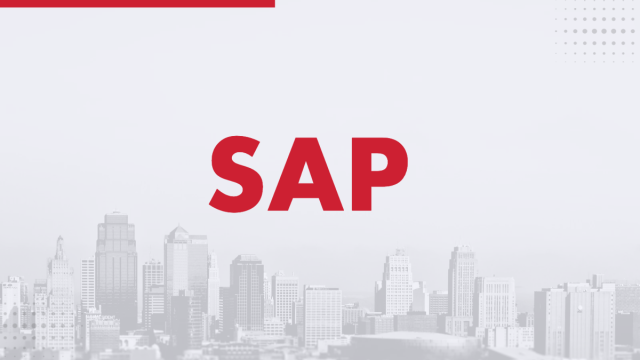SAP is a well-known name in the enterprise resource planning (ERP) field. The company produces software solutions that focus on providing actionable insights into companies’ operations by leveraging data, allowing users to enhance productivity and improve efficiency across supply chains.
There are two options out there for SAP systems. This article will provide a complete guide to comparing SAP Business One and SAP S/4HANA so that business owners and the key stakeholders tasked with making software buying decisions can better understand their options.
What Is SAP Business One?
Contents
SAP Business One is an ERP system designed primarily for small businesses that can choose to implement a full suite of functionality or a more modular approach depending on their needs. SAP One is highly customizable, making it possible for businesses with limited financial resources to get the tools they need to grow and thrive, integrating new functionalities as they become necessary.
What Is SAP S/4HANA?
SAP S/4HANA is designed with the needs of larger and more financially stable businesses in mind. Although it costs more than SAP Business One, SAP S/4HANA is generally the preferred solution among more complex companies because it integrates a wider range of technologies to enhance operational efficiency and agility.
Crucial Differences
Although SAP One and S/4HANA are produced by the same company and both serve the same general purpose, there are some key differences between the two ERP systems. They include:
1. Ease of Use
Both SAP One and S/4HANA are designed to be accessible. However, the complexity of the S/4HANA system means that it requires additional staff training to implement and operate the ERP in comparison to the less comprehensive and complicated SAP One. Users of SAP One report specific tasks like updating and applying settings as being more complicated.
2. Robustness of Features
SAP One and S/4HANA look similar at first glance when it comes to functionality. The key difference is that S/4HANA offers a far more robust set of features in each module. For large businesses with complex structures and operational needs, the added features found in SAP S/4HANA are well worth the extra investment.
3. Size and Scalability
Because SAP One is designed as a discreet ERP solution for small to mid-sized businesses, it offers great scalability up to a point. For companies with 10 to 100 employees, it’s a perfect fit, but SAP S/4HANA is a better option for larger businesses with greater numbers of potential users.
4. Pricing and Fee Schedules
When it comes to affordability, SAP One certainly wins out. There are obvious trade-offs, though. SAP One is more affordable because it’s designed to meet a narrower range of needs and can only be scaled up to a certain point. SAP S/4HANA costs more but makes up for the increase in price with a greater range of more robust features and the ability to accommodate organizations of any size.
Learn More About Both Options
There’s not always a clear answer to the question of whether SAP One or S/4HANA will be a better fit for a particular business. Unless the business falls on one end of the size and budget spectrum or the other, either one could be a good fit. The best way to decide between them is to learn as much as possible about both software solutions, then pick the one that offers the greater value for the company.


